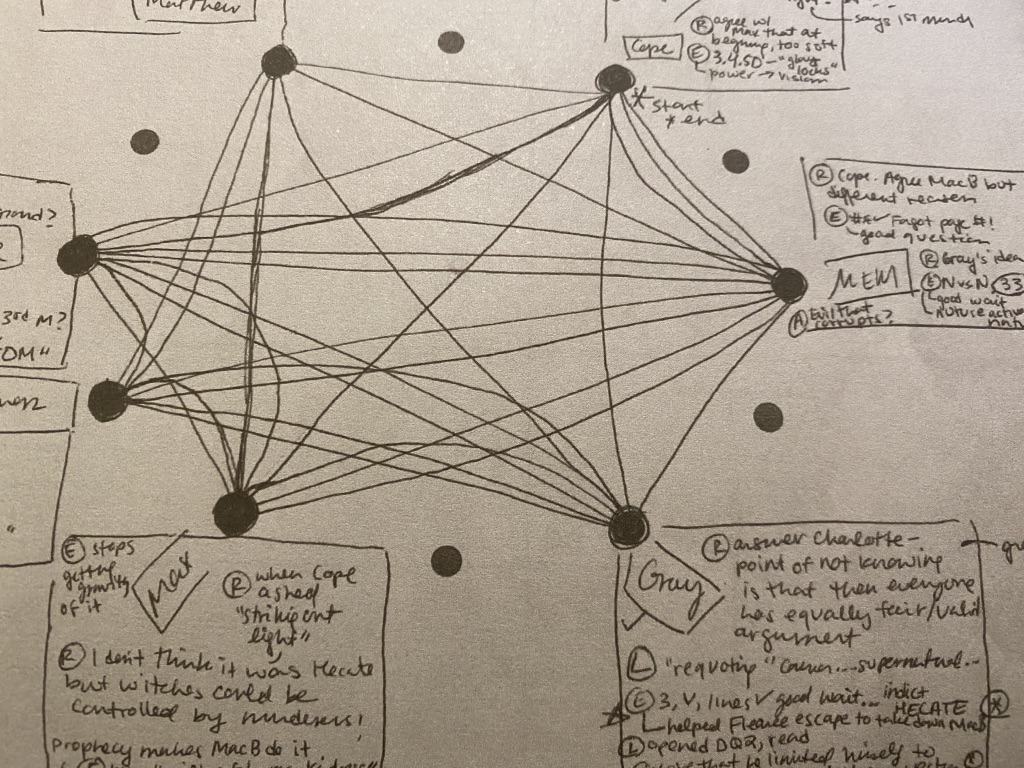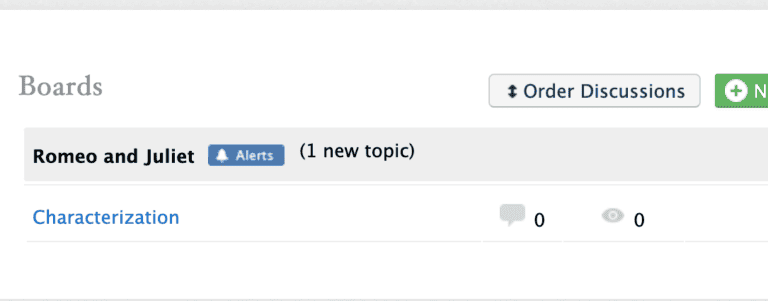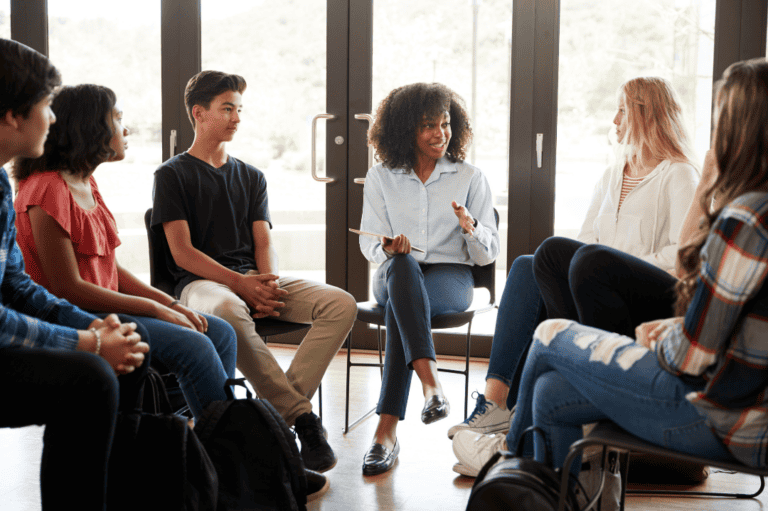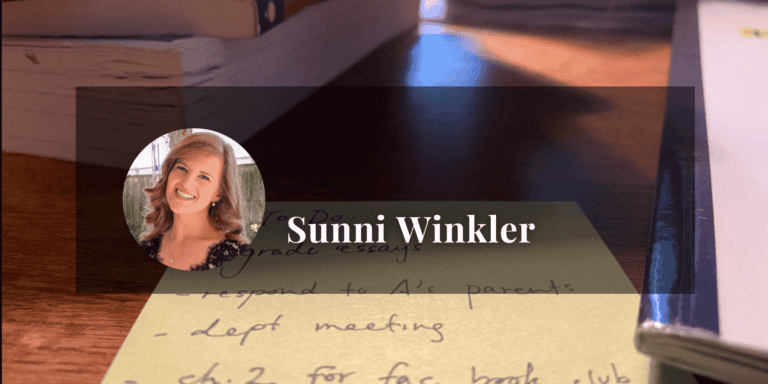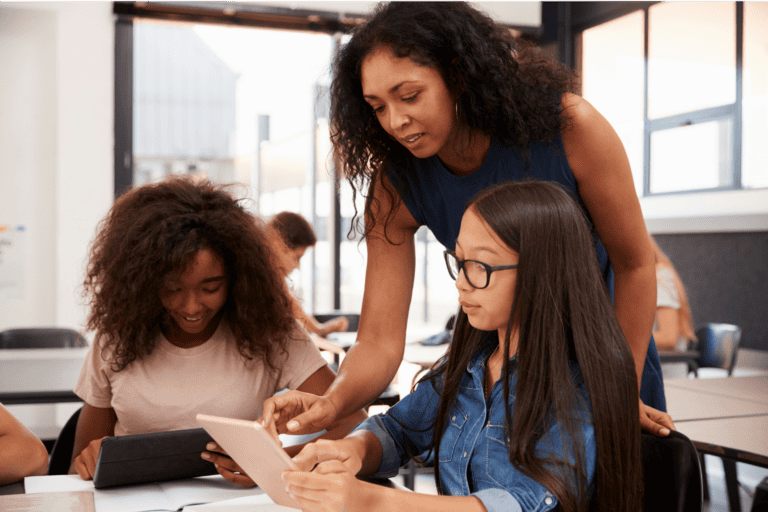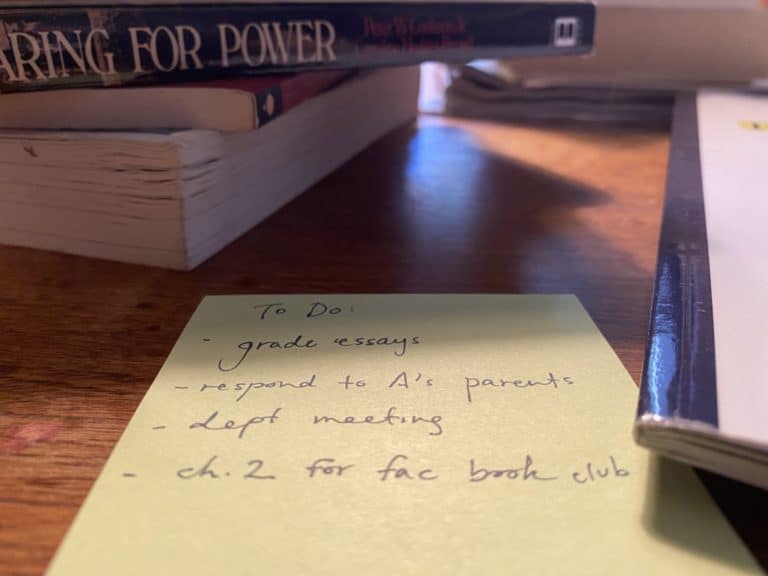Office Hours: 30 minutes with Constance Borro
Constance Borro is the Chief Executive Officer at Mastery Portfolio
Thanks so much for joining me today. To start off, I’d love to hear about your life and experiences leading up to Mastery Portfolio. What got you interested in this work?
I was a full-time classroom teacher for about eleven years and instructional coach for a few different schools. Through those experiences, I spent time in classes from K-12, working in private schools, charter schools, and district public schools, and the common denominator of all those experiences was that traditional grading really didn’t motivate my students. Standards-based grading provided them with much more motivation. What made a difference in motivation and engagement was tracking student skill mastery over time and giving students credit as soon as they learned something. Showing students their mastery level and tying that back to goals for the year was empowering, especially as students watched their knowledge grow and their mastery levels change. As mastery increased, they could see the direct result of their effort and celebrate that result. I built a classroom culture around learning and skills development. I saw, through these experiences, that skill-based curriculum eliminates the distraction of the points-grubbing game. If I myself hadn’t always been just trying to do the minimum amount of work to get As when I was in school, I sometimes wonder how authentically and deeply I might have learned!
At the school in which I worked most recently, I was looking for a software tool to help track skill mastery and couldn’t find one that was truly aligned to a standards-based grading philosophy. My partners and I decided to build that tool. That was the birth of Mastery Portfolio. Across the company’s journey, I’ve realized that schools benefit from the workshops, consulting, and leadership coaching that we do. We aim to support best practices in grading and assessment to bring equity, clarity, and motivation to all students at all kinds of schools.
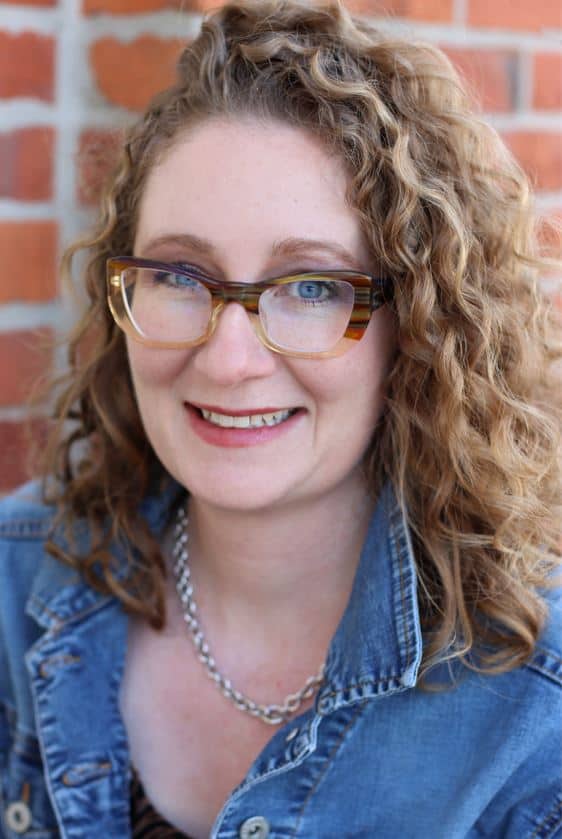
It’s usually a four- to six-year plan to fully and successfully shift a school to a mastery-based system, and the amount of time depends on the existing philosophical alignment that the school has, or whether that alignment needs to be developed. The first move we make is consulting with the school on what the plan might look like based on what they’re already doing well and where they need to grow – their assets, gaps, inconsistencies, and so on. The first year is the building capacity year, a time during which teachers do structured learning about what best practices are, have conversations, norm as a community, and build a grading philosophy statement. From there, we work to track out what the second through fifth years will look like. Usually, there’s a big goal. Maybe all students will have portfolios by the end of the year reflecting their own self-assessment. Or maybe a school aims for full implementation of a competency-based transcript model, which can be a 3D document showing what makes a kid tick, what twenty-first century skills they’ve mastered, that they can send to admissions officers at colleges to really illustrate who a student is. I usually describe a mastery portfolio as shifting the transcript. Especially at top schools, every kid sends a transcript with all As and AP courses to the admissions office. To differentiate and visualize what a student brings to the table, we need to be able to show a broader and more productive picture of the skills they’ll bring with them to campus.
One of our real values at Mastery Portfolio is that every school community is very different. You can’t push one model and expect it to work in every school. That’s really why the goals and processes we propose to schools look different and take different amounts of time. The way that we help schools gain clarity on their vision is by asking questions, listening deeply, and teasing out the best direction for that community. If a school leader can articulate what a school is doing to develop equitable learning, that’s huge, and our team can use that action and build off of it. We can bring our experience from a variety of schools to the table, so that a given school can benefit from all those other schools or districts we’ve worked with before. A lot of schools redesigning assessment may never have done so before, and so that breadth of that experience adds value to our work.
Mastery Portfolio works to bring school districts, schools, and teachers more tangible and actionable representations of students’ skill development and needs. Much of your material focuses on shifting assessment away from comparison and ranking and toward a more holistic measurement of student progress. What, in your eyes, are the biggest areas that schools and teachers should center as they consider and reconsider assessment?
There’s often a misalignment between a school leader’s impressions of the teaching and learning and assessments in a classroom and the actual, on-the-ground work that teachers do. That means that you might have a quiet teacher who does her own thing and is not on the principal’s radar as a stand-out, but is really a model for assessment. In another school, the principal might trust teachers to the extent that they believe that certain practices are in place that aren’t actually uniformly practiced. One element of our work is to teach school leaders to ask the right questions and really see what’s happening; we have to center what’s really happening in a school in order to identify goals and needs for that school.
Sometimes, we go into a conversation with a school leader and they have a very ambitious goal, but as we uncover what’s happening, sometimes we have to scaffold more than expected to get to that ambitious outcome. Taking stock of where you are now is a really important piece that school leaders sometimes identify but not always. If we don’t take stock of the starting point, that blind spot can stop schools from making appropriate changes.
We also often see teachers who like the vision and see the value in where the district wants to move, but they have a hard time seeing the steps. If you have three professional development days, how can you use that limited time to really move the needle of school practice? When my team and I work with schools, we’re really trying to build that roadmap. Organizational change is exciting and important, but with one misstep you can lose buy-in from stakeholders.
Mastery Portfolio seems to focus a lot on data as an avenue for teacher and school learning. What kinds of surprises tend to emerge from that data? What are some of the blind spots that you often see, and what are some areas of growth that you think teachers should focus on?
A lot of teachers and leaders come to us because they have limited data showing student progress, and that’s because they measure progress only once or a few times in the year (state test data, or map testing, or the iReady program, which allows a pre- and post-assessment). All the growth tools available are largely based on summative assessments. Our tool allows teachers to keep track of formative assessment data without “hurting” a student’s grade as they continue learning. Teachers can enter as many observational or mastery skills into the system as they want to. That way, they can really start to see a long and short term vision of progress. Having specific, real-time data doesn’t seem possible in the status quo, but it is possible, and that data is transformative. When the students do a summative assessment at the end of a unit, that data will stand as their mastery level and the formative data will just be there to show the progress they made along the journey. At the first parent-teacher conferences in a school year, a lot of parents don’t expect teachers to have growth data yet, but teachers who use our tool really can. It’s really helpful to communicate with parents and students. Students have access to it at all times.
We have a chart that’s a bar graph mirrored above and below the x axis. Above the axis, anyone can see the skills mastered, and below the axis one can see the skills the student hasn’t mastered. One of the most common patterns comes when a teacher can see how a student has grown, but the number of standards that student has been taught but has not yet mastered has also grown. The teacher won’t have thought that the student was struggling, but the bars show what’s not there and allow for us to see what we don’t otherwise see. The quiet, well-behaved student doesn’t seem like they need your help, but a comprehensive check with our data displays can reveal otherwise and address the blind spots and biases that we can easily have unknowingly with our students.
How does Mastery Portfolio engage with social-emotional or interpersonal skills? How can we measure and provide meaningful feedback on those skills?
Part of the impetus for this work is that schools identify higher anxiety and mental illness related to pressure to have perfect grades. As college admissions become more competitive, that trickles down, and kids show up to college in the middle of a breakdown. Dr. Lisa Damour has done great research on the relationship between that grade pressure and student wellbeing. One of our philosophies is to strip away the distractions in school. Points and averages are really ranking and sorting systems. If a school’s goal is to develop the potential of every student, the way that they measure student potential, progress, and achievement needs to change. We (at Mastery Portfolio) specialize in helping schools identify: what do you want students to leave your school with? If it’s not a label or a rank, let’s redesign your grading and assessment system and design it to celebrate the word that does represent achievement. Credentialing, semester long internships: whatever that portrait of a graduate is that you have in mind, let’s make sure your grading and assessment rewards match that. We’ve done a standards-design workshop with schools with graduation competencies around discussion, argumentation, and other interpersonal skills. We identify those skills that are the aim and then we can help schools backmap what that looks like at each grade level.
One way that I’ve found success in more traditional schools is to tackle this work in bite-sized chunks. If you’re not ready to, don’t even touch the transcript. Do work with formative assessment. Just because you’re talking about iambic pentameter doesn’t mean students learned it – how have you checked that skill? What’s the authentic assessment that could assess the skill? You could have students submit their work to a Shakespearean director and get their feedback. Send it to Kenneth Branagh! That opens up a student’s world. Some kids have extraordinary connections, and some kids have none; you’re helping kids and giving them confidence by having them think about authentic audiences and how they might engage with them. Doing the work of the field, not just learning about it, is empowering and gives students more clear feedback on how much, and what, they understand. I get really excited about this stuff. Kids will blow you away with what they can produce once they have the freedom given by the structure of rigorous standards and authentic assessments.
When you don’t have standards defined as a department, and expectations for both students and teachers aren’t clear, there’s too much latitude. Students need clear expectations to feel successful. My partner, Starr Sackstein, has published many books on grading and assessment. She’s a great resource, and her writing is great to look into. There are lots of low-hanging fruit opportunities within just a department to shift practices toward mastery and motivation to build skills that can otherwise seem intangible.
Reflection seems to be a big part of Mastery Portfolio’s work. What does reflective practice look like for students, and in your mind, what is its relationship to student learning?
One of the first steps we recommend is for each teacher who’s using our app, the Mastery Book, to take one day or class period per semester with each group of students you teach and call it a remastery day. Print out the mastery reports from the masterybook.com so kids can see what they’ve mastered and what they don’t have credit for yet. Then, give students time to read through and highlight key words they don’t recognize. For example, if there is a standard on fraction multiplication that you didn’t learn in that unit, and you learned it in a later unit, you should reassess on it, as you may have mastered it by now. Giving students a chance to reassess on missed material from before, and providing a quick check for understanding right there on that day, gives the student a chance to hand that assessment to you, and then you enter that mastery rating. They immediately see the impact, whether upon their grade (if you’re still tied to that) or maybe it’s a red/orange/green scale and the green goes up. This shows kids that when they take the time to relearn and reassess, they see improvement – they’re not dinged for not having understood sooner. That more appropriately mirrors how the world works. If you’re not good at something, and then you get it, people notice the fruit of your labor. We want to build the practice in students to take feedback, reflect on it, act on it, improve, and then demonstrate mastery so that they can move on without lingering on the fact that they didn’t “get” it the very first time. Really, this isn’t just about redesigning assessment; rather, it’s about redesigning the feedback loop and making sure that we build student reflection so that teachers aren’t the purveyors of learning. These are the dispositions that we all want in our colleagues, employees, and supervisors, so let’s build them in our children.
What is a prediction that you have for the future of education?
I have a lot of hopes and dreams. I think the pandemic made parents realize how valuable good teachers are, and also the discrepancy between effective and ineffective teachers. I hope for a change in compensation structures for teachers so that we compensate teachers well for the good work that they do. Secondly, the push to go virtual during the pandemic has expanded people’s ideas of what’s possible in a pandemic and beyond. For example, if I have students do research on ancient civilizations in History class and building of real numbers in Math class, that could be an opportunity for cross-curricular projects. Online sources are great, and experts in the field could join from anywhere virtually. The world has become a smaller place. I’m hopeful that with those opportunities, students will be the ones leading. They’ll start to use technology to make learning more authentic for themselves. Whenever learning is more authentic, the other pieces – assessment and outcomes – fall into place.
